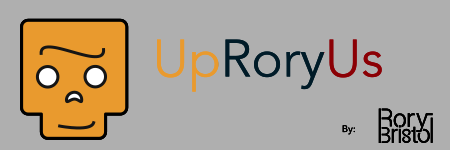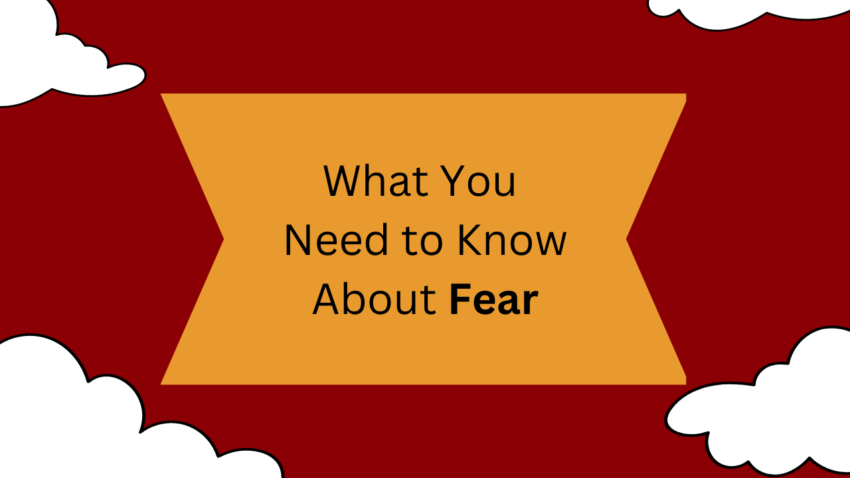Let’s Talk About Fear
Fear is a normal and necessary part of the human experience. There are specific things Fear does for us, what it communicates to others, and ways to change our emotions when we are afraid, or should be afraid.
What Are Fear Emotions?
As with our previous emotional categories, Fear is a category that houses a lot of other emotions inside. The different ways we experience fear depend on who is involved, what is happening, and what we believe about the situation.
Interpersonal Fear
- Shy
- Creeped out
- Misgiving
- Clingy
- Distrustful/Mistrustful
- Jealous
- Wary of others
Fears Without People
- Hesitant
- Trepidation
- Angst
- Jumpy
- Tense
- Edgy
- Frightened
- Overwhelmed
- Panicked
- Terror
Fear’s control center is in the brain, in a small almond-shaped section known as the amygdala. This control center is in charge of our “stress response” also known as “Fight or Flight” or “Fight, Flight, Freeze, or Fawn”. As a protective process, stress acts very quickly, with very little warning at times.
When we experience the stress response, our amygdala sends signals to our kidneys to produce adrenaline and cortisol, which act together to prepare us to handle threats. In the meantime, the amygdala asks other parts of the brain to chime in, and determine the correct action to take as a response.
Up to this point, we haven’t had a specific emotion yet, just the stress response. When we get information from the rest of the brain to contextualize the perceived threat, the emotion begins. If the threat is something to avoid or mitigate, we get Fear.
The interpretation of the need to freeze, run, or soothe, combined with the stress response results in Fear.
What’s the Point of Fear?
Fear is a motivating emotion, which drives us to stay alive. During the evolutionary process, this would have been required for handling many kinds of threats, from poisonous plants to venomous animals. Fear is so integral to living that even extremely simple life forms have a fear response. In complex lifeforms like humans, fear can manifest in many ways, but all of them are attempts by the brain to protect us from a real or imagined threat.
In modern society, Fear continues to protect us, and to communicate to others what we think is dangerous. Without Fear, we would lack tools for communicating threats, risks, and dangers to others, such as our children.
Communication
Speaking of communication, let’s look at what Fear tells us and other people about us. Fear indicates that we believe there is a present risk. Ideally, our level of fear correlates to the level of the threat, which communicates to others how much danger there is. Imagine there is a fire in your building. If you walk into a meeting room, and quietly or hesitantly announce that there is a fire, the people in that room may not think you are serious, or may assume the fire is small and non-threatening because you are calm. When we experience fear visibly, it helps us convey the level of the threat accurately.
What Does Fear Feel/Look Like
Fear is characterized by the stress response, primarily. Our body prepares us for taking action. We may have a surge of energy, our skin becomes flushed and more full of color, and we may feel tense or ready to lunge into action.
As the stress response turns into Fear (which can be very fast), we produce more saliva, our heart rate increases, , and our sinuses clear. Adrenaline and Cortisol prepare every part of our body for action. Our digestion slows down, our Happiness, Sadness, Anger, and Disgust are all suppressed to a degree, and we hyper-focus on the perceived threat. We may have trouble changing the focus of our attention, and feel the need to dwell on whatever has made us feel Fear, especially if we feel like we cannot avoid the threat.
Seeing Fear in Others
The easiest ways to spot Fear are in people who are speaking especially loudly or quietly. They may also shake, cry, flinch, or stare without blinking. Other signs include hiding the face, sitting on or hiding their hands, and hiding behind other people or things. Sometimes, this may look like the person being silly, or it may appear obviously futile. These things happen when people don’t feel safe being honest about their fear, so they only hint at their fear without explicitly expressing that fear.
You might even see an Angry person swearing, shouting, abandoning loved ones, or breaking social norms that would normally be important to them.
Changing Fear
As a stress response, Fear leaves us prepared to feel Anger and Fear very easily. Thankfully, the stress response (Fear/Anger) and Happiness, Sadness, and Disgust are housed in different parts of the body. This means that we can experience Happiness, Sadness, and Disgust at the same time as Fear, which can help you reduce your Fear.
Having a strong Happy response can enable us to completely ignore our stress chemicals while the Happy chemicals work on cleaning them up. This is why many anger management programs focus on the use of Happy visualizations and increasing Happy experiences.
When Fear Goes Wrong
When we become afraid, we tend to be less effective in the face of challenges. We may hyperfocus on the idea of the threat, ignore other dangers, and ignore other people’s needs when we are afraid. When we are afraid while working, we may be distracted, unfocused, and unproductive. This is because our brains do their best to prioritize fear to mitigate the threat.
When we have Fear, we should always attempt to handle the cause of the Fear right away, in order to prevent it from taking over our day. If we express Fear too often, or do not handle our Fear, others tend to take our concerns less seriously. This is especially true if the cause of the Fear is something others might find trivial, like small animals, health anxiety (without a clear physical cause), or inevitable things like the passage of time.
If you have fear too often, therapy, medication, and psychiatric treatments are available to help you understand you fear, and how to manage it productively.
A complete lack of fear would lead to death in no short amount of time. We use fear every time we drive, shop, cook, talk, and even sleep. If we didn’t have fear in these processes, we might crash our car, eat raw or spoiled food, say or do something offensive, or expose ourselves to the elements when sleeping, which can lead to illness.
As a side note, a life without Fear also means a life without courage. Courage is what happens when we are afraid, and understand that there is a risk at hand, but proceed anyway. The researcher Brene Brown talks about the need for fear to be present to make room for courage much better than I can explain it, so please check out her work. She even has a Netflix special called “The Call to Courage” in which she shares her research and experiences.
Is Fear Always Bad?
Fear is rarely a “bad” thing. What matters is whether or not the Fear is proportional to the threat, and that our actions also match the level of the threat. In some situations, acting on our fear may be less effective than others, but that doesn’t mean there’s anything wrong with the feelings we have. It just means another approach or solution might be needed.
For example, if you are afraid of losing your job because a coworker (who doesn’t have any kind of special knowledge, or reason to have such knowledge) told you that they think your supervisor wants a smaller team, it probably won’t be effective to go to your supervisor in tears, asking if you can keep working for the company. Instead, it might be more effective to 1) Ask the coworker if there’s any basis for this claim 2) Bring the conversation up with your supervisor, being honest about your feelings and/or concerns, but not demanding any course of action until AFTER the supervisor has confirmed there is a chance that the team will get smaller. Remaining calm, candid, and open to the supervisor’s response is much more likely to cement your place on the team if it is shrinking, when compared to the perceived “drama” of entering the conversation without doing research or while overly emotional.
Fear Can Be (Re)Learned!
Unfortunately, it is very easy to develop one of the many fear-based psychological disorders. There are many risk factors for experiencing too much Fear, ranging from having a chaotic or abusive childhood to not knowing what you want from life. For example, I grew up in an abusive environment, and the people I trusted to take care of me were the people most likely to hurt me. I became afraid of every adult in existence, which was terrifying as a child. This led me down a path of excessive fear that I could not manage. I started drinking at age 13, and didn’t improve my relationship with alcohol and substances until I was over 21. The substance use (mainly beer) was simply a way for me to calm my nerves at times, effectively giving me a break from my Fear.
Obviously, I recognized that this was unhealthy, but I didn’t know how to handle my emotions for a long time. Eventually, the summer that I turned 21, I started practicing radical candor, telling people the truth even if I didn’t know how to make it nice for them. I practiced this because it allowed me to focus on living my value of honestly, even if it came at the cost of social graces. A few months later, on my 21st birthday, I decided to stop drinking because I no longer needed to feel numb to survive my experience. I could talk about it, even if people didn’t like what I had to say.
Critically, the message I was sending my brain was “It’s okay to be me.” By living candidly, and seeing how I was still accepted and celebrated by my friends and family, I was able to blaze a path in my brain that said, “My experience is valid.” I eventually reached my skills limit and didn’t improve on this until I got a therapist, but by then, I was already in the habit of not being afraid of every single interpersonal interaction, which allowed me to engage meaningfully in therapy.
Want More Fear Topics?
Next week, we will cover the fifth category of emotions, Disgust. Once that video is live, look forward to skills-based videos that can teach you to increase or decrease any given emotion. I hope you’ll join me for these videos, because these skills change lives. I see it happen constantly while teaching these skills, and I want everyone to have access to those tools, without the need for insurance, therapy, psychiatry, or any other barrier.
Further reading: Smithsonian Magazine—What Happens to our Brain when we Feel Fear
If you have questions, feel free to email me at Rory@UpRoryUs.com. I will collect questions and film one or more videos answering those questions.
Thanks for reading my post on Fear. Remember to be kind to yourself and others.

